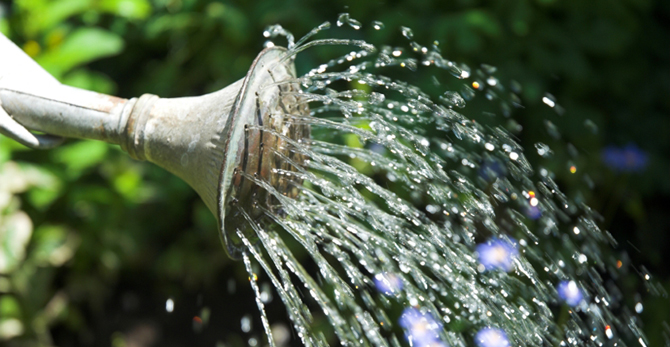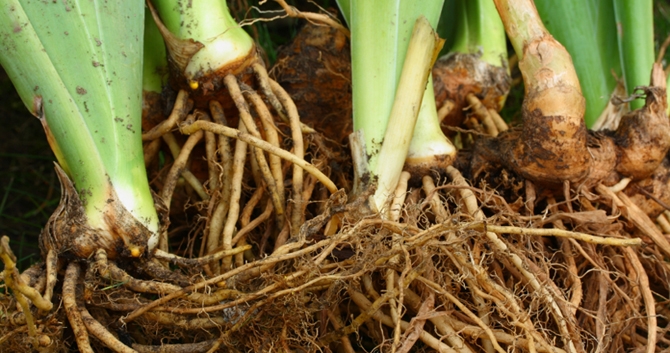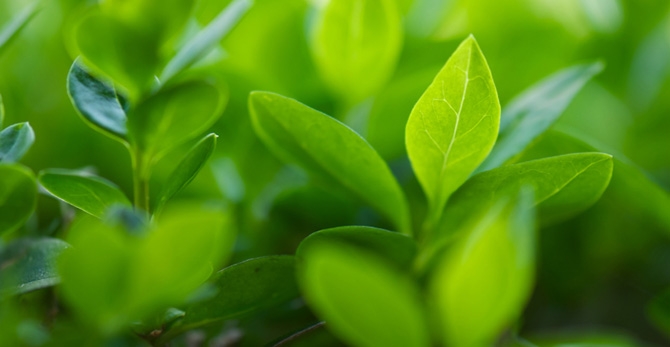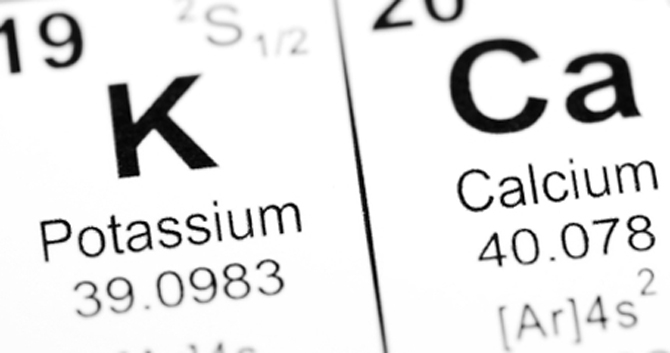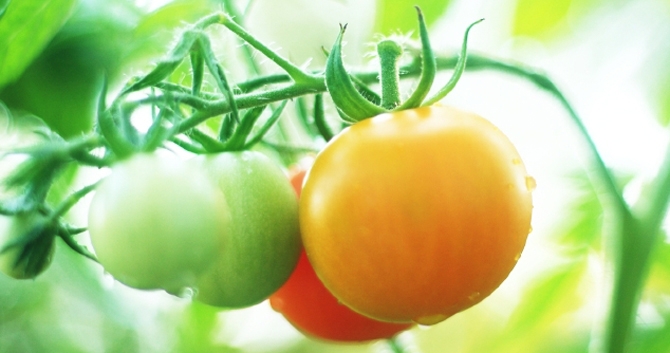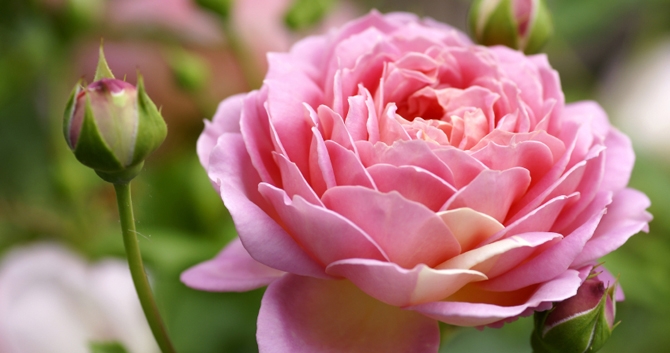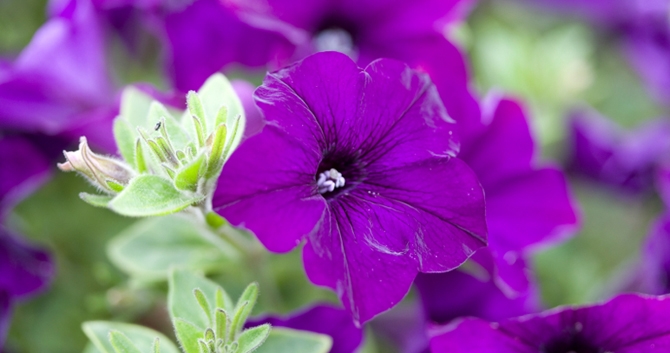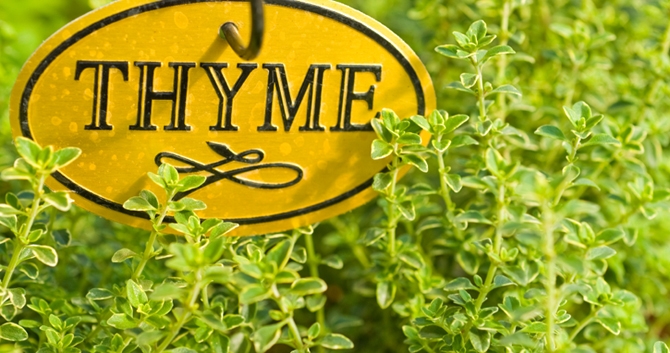Let’s face it, when it comes to the pleasures of gardening, fertilizer ranks right above weeding, watering, and pruning – you wish someone else would take care of it so you could sit back, relax, and enjoy the garden. But it turns out that selecting and applying the right mix of nutrients is easy once you understand a few basics. By feeding your plants regularly, you’ll be rewarded with a colorful garden filled with healthy plants, abundant flowers, and enough herbs and vegetables to feed the neighborhood!
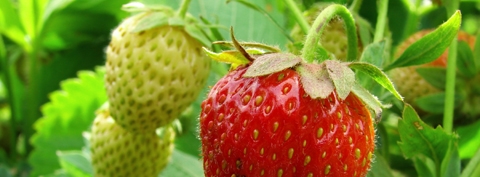 Get more fruit by fertilizing with an all purpose fertilizer
Get more fruit by fertilizing with an all purpose fertilizer
Just like us, plants need certain nutrients to grow and bloom to their full potential. They can’t always get everything they need from the soil so fertilizing is like a vitamin supplement that helps them grow faster, bigger, and stronger.
When shopping for fertilizer it’s easy to get confused by the numbers on the package and overwhelmed by all the specialty fertilizers for different types of plants. But don’t despair; deciphering fertilizer is easier than it seems once you understand how three nutrients (nitrogen, phosphorous, and potassium) help plants grow strong, healthy foliage, flowers, and roots.
The Basics
Although unseen and usually forgotten, healthy roots are critical for healthy plants. A strong root system draws water, minerals, and nutrients into the plant, helping to grow sturdy stems and develop a strong immune system. The roots also anchor the plant and help it tolerate changing weather conditions, such as drought, heat, and cold. Roots need phosphorous and potassium to develop and spread. New plants need a dose of both to help them get established and grow into maturity. Established plants also need potassium during hot, dry periods when the roots are working overtime and the plant may be stressed.
Once plants are established, gardeners spend their time obsessing about full lush foliage and abundant fruit, flowers, and seeds. Nitrogen is the key ingredient for healthy vibrant green leaves, prolific herbs, and luxurious lawns. Unfortunately, it flushes easily from the soil so regular feeding is important to keep the flow of nitrogen into the plant.
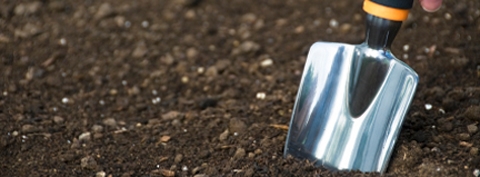 Add phosphorous and potassium to the soil when transplanting to encourage root development
Add phosphorous and potassium to the soil when transplanting to encourage root development
Phosphorous is the secret to bigger blooms, providing the energy needed to stimulate flower production. Perennials, shrubs, and trees could use a boost of phosphorous after the first flush of foliage emerges so the energy shifts to flower production, while annuals and vegetables benefit from regular application throughout the summer since they produce blooms for several months.
Proportions
Just like multi-vitamins, pre-mixed fertilizers combine the three main nutrients in different proportions depending on individual plant needs or garden situations. The nutrients are listed alphabetically (nitrogen, phosphorous, potassium) and are abbreviated N-P-K (potassium is also known as vitamin K). The numbers on the package refer to the percentage of each nutrient the mixture contains.
All-purpose fertilizers have proportions of each that works for most plants in most situations, generally an equal ratio of N-P-K. Specialty fertilizers tinker with the proportions of these same nutrients depending on what the individual plant or garden situation requires. They're aimed at the gardener who wants a particular combination to help plants or lawns green up (high nitrogen mix), encourage blooms (high phosphorous mix), or has a ratio needed for specific plants such as roses, African violets, citrus trees, or other cultivated plants.
Types of Fertilizer
Fertilizers come in several different forms including liquid, granular, sticks and tablets. Each offers different advantages in terms of convenience and personal preference. Liquid fertilizers are easily added to a watering can or dispenser attached to the hose or sprinkler. The nutrients are available immediately to both the roots and leaves, providing a steady supply of nutrients that is easily controlled. Being water soluble, they disperse quickly in the soil and must be applied regularly, but since application is so easy, the inconvenience is minimal. Liquid fertilizers are excellent for plants that are heat stressed or suffering from a nutrient deficiency, delivering instant relief. They are also good for indoor plants, easily measured and diluted as recommended for the type of plant and size of the container.
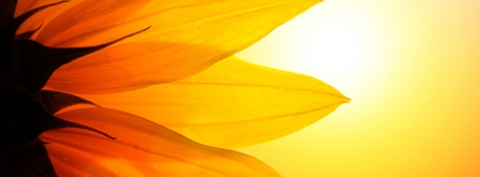 Use less fertilizer when it is hot to avoid encouraging growth when plants are stressed
Use less fertilizer when it is hot to avoid encouraging growth when plants are stressed
Granular fertilizers are sprinkled on the surface of the soil or lawn, releasing fertilizers immediately or slowly releasing them over time, depending on the formulation. Slow release pellets have become very popular for both indoor and outdoor plants. They’re a great option for gardeners who prefer not to worry about when to fertilize. The pellets are coated with a time-release shell that gradually adds nutrients to the soil, giving plants time to absorb and use them throughout the growing season. These are a great option for gardeners who prefer to wait a few months between fertilizer applications.
Other types of fertilizer include sticks and pills which provide nutrients in a relatively small area in pots and containers. These also provide time release nutrients for convenience.
When to Fertilize
Establishing a routine is the best way to ensure your plants thrive and grow to their fullest potential. Most plants have care instructions on the tag indicating when to fertilize (these are also included in the plant profiles on our site), but there are some simple guidelines for annuals and perennials that you can follow.
For outdoor perennials, there are a few simple rules of thumb when it comes to the best time to fertilize. If the plant was added to the garden in the fall, wait to fertilize until the following spring after danger of frost has past. For plants put in the ground in the spring, wait six to eight weeks to fertilize to give time for roots to develop before encouraging foliage or flowers to grow. Stop fertilizing perennials in late August to avoid encouraging new growth that could be damaged over the winter months.
For containers, window boxes, or indoor plants, think of fertilizer as the second half of the potting soil. When potting soil is new, plants will get all the nutrients needed, especially from fortified blends that combine potting soil and fertilizer in a convenient mix. After about two months, the plant will have consumed all the nutrients and need to be fertilized regularly for healthy growth.
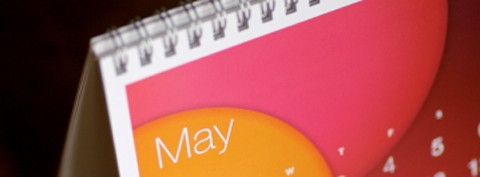 Fertilize perennials, trees, and shrubs in spring after danger of frost has passed
Fertilize perennials, trees, and shrubs in spring after danger of frost has passed
Annuals, herbs, and vegetables should be fertilized regularly throughout the summer since they rebloom all season.
We all know that even the best intentions go awry and there may be times that you take a holiday from those regular feedings. Just be sure to keep a watchful eye for telltale signs that plants need attention – if they are not putting out good growth, leaves are undersized or yellow, or flowers seems scarce, it is time to fertilize!

